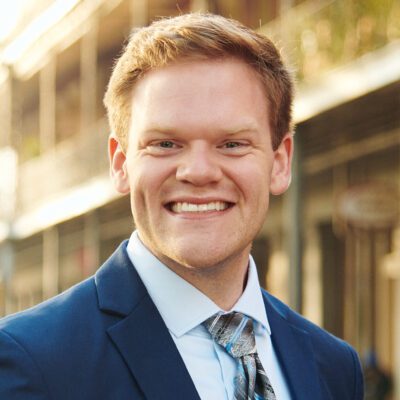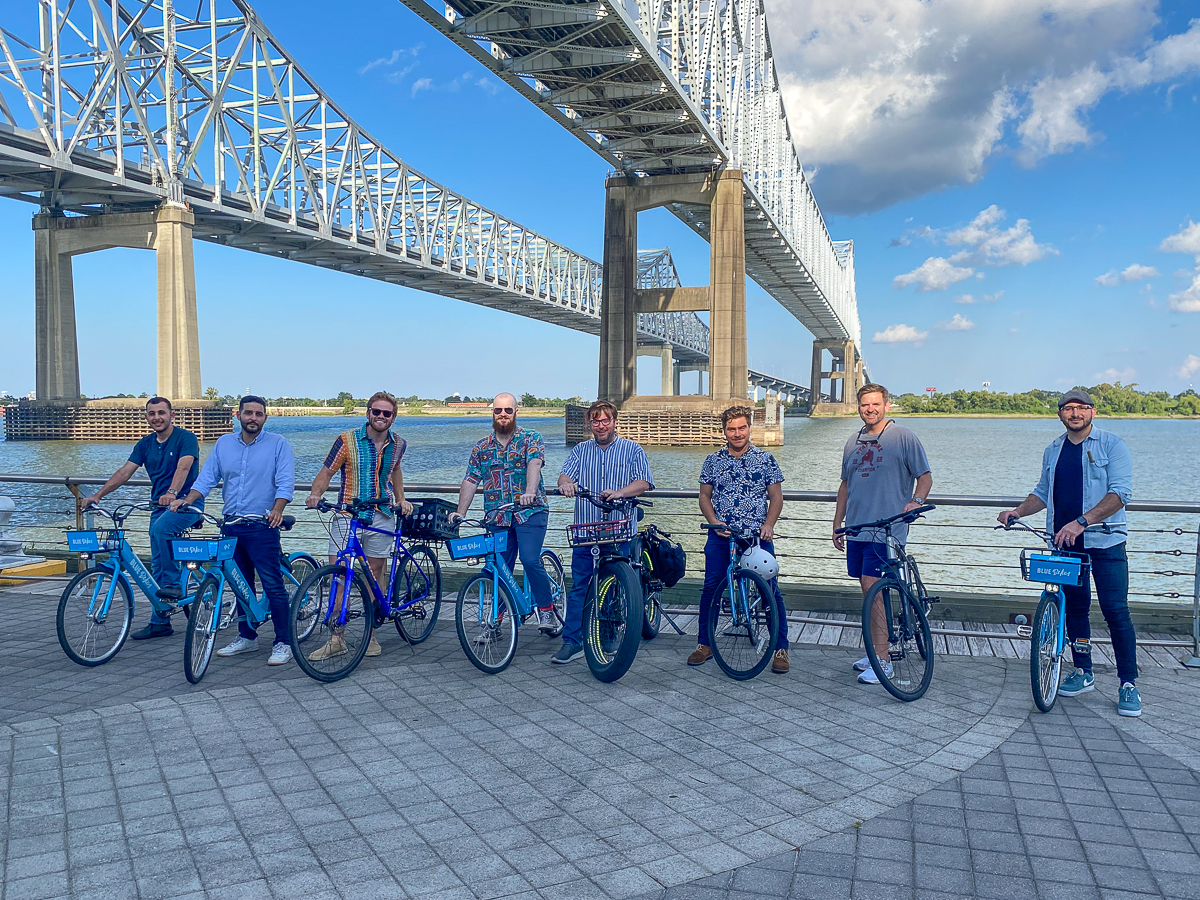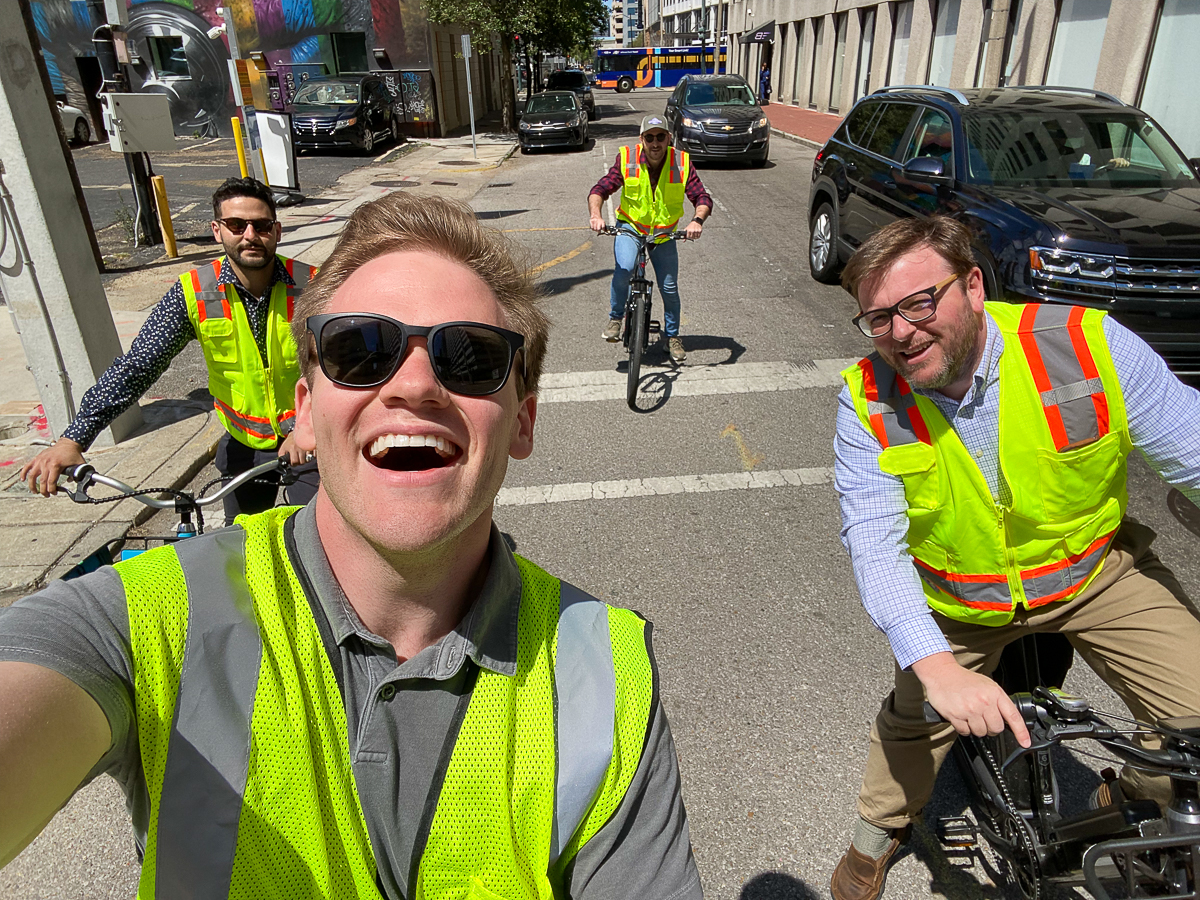 Menu
Menu
- Fenstermaker Insights
- Engineering
- A Civil Engineer’s Call For Change: Embracing Equity In Infrastructure Design
Fenstermaker Insights
A Civil Engineer’s Call For Change: Embracing Equity In Infrastructure Design
By Nick Scalfano, E.I. – February 23, 2023

‘Infrastructure’ is a word we hear often. From federal bills to our small-town elections, we hear that our infrastructure is failing and progress does not seem to be as near as we want. My hope is to provide some insights on infrastructure as it pertains to the duties of an engineer from an ethical and equitable standpoint.
My name is Nick, and I’m a water resources engineer at Fenstermaker’s New Orleans office. I’m not originally from New Orleans, but the city has slowly become dear to my heart because of the people, the culture, and the struggles that both face daily.
Originally from a small village south of Alexandria, my family and I always relied on Lake Charles Highway (U.S. 165) or I-49—each about a 35-minute commute—to get to school, church, or grocery stores in Alexandria each day. However, moving to Lafayette for college turned out to be an incredibly different experience. Living on campus provided me with the opportunity to be within walking distance of all of my needs. I could shop, eat, pray, and play all within a 15-minute radius of my dorm. (Sometimes I would go to class, too, I guess.)
After graduating from the University of Louisiana at Lafayette, I spent some time living in a car-centric, suburban neighborhood. The longer I lived there, the more isolated I felt. I longed for my college days when I walked with friends to the library, studied in the park or coffee shops conveniently placed around campus, and socialized with my community.

Eventually, I moved to New Orleans and settled in a place near Tulane University’s campus that is loaded with public infrastructure such as bike lanes and green spaces. Some of my favorite bike rides are through the campus while playing music on my speaker, receiving approving looks or even a long, drawn out, “Ayyy!” implying they love the song.
My biking commute to work provides me with relationship-building and refreshing activities as I ride along the Lafitte Greenway.
In these moments, I’m reminded UL’s campus where a culture of face-to-face, very human interactions and experiences was cultivated.
I find most people proud to have attended their alma mater, a place where they could truly build community. The same pride can be found in some of our oldest neighborhoods in the United States, such as Society Hill in Pennsylvania, Vieux Carré (French Quarter) and Tremé in New Orleans, and Greenwich Village in Manhattan.
These neighborhoods were built upon the ideals of what a community is: a group of people working together to grow together. They were built on the human scale, very unlike cities built upon the automobile scale, those that continue to sprawl out, distancing the cheapest properties from the job centers, making the commute longer for those lowest paid and consequently, those least-likely to own cars.
Why does this matter to me?
Having these improved, people-centric communities is not only vital to humanity’s quality of life, but also to humanity’s right to life. I grew up with the mindset that vehicles were a necessity. Until recently, I didn’t understand that it is actually quite a privilege to drive, because many within our communities go unseen when it comes to their modes of transportation.
As engineers, we cannot and should not be blind to this. Infrastructure can be deadly when designed incorrectly or without due respect for every human life.
If we prioritize objects (property, commerce, vehicle speed, simplistic calculations of economic ‘savings’) over life, we become part of the problem.
How many of us are scared to walk or cycle across the streets running through our towns and would rather drive in our vehicle to the other side of the road to avoid getting hit? How many people must get injured at a crosswalk because the time allotted to cross isn’t reasonable (if there’s a crosswalk at all)? How many cyclists must get injured or worse before they’re given the same amount of respect as drivers of cars?
Well, let’s get technical.
In many cases, engineers are tasked with transportation planning which, unfortunately, has historically been focused on the needs of drivers with little consideration given to other modes of transportation or the needs of the broader community. This is more of a highway planning approach and can lead to an overemphasis on highways and high-speed roadways, exacerbating urban sprawl, damaging the environment, and creating significant barriers for people who do not own or have access to cars.
Transportation planning and highway planning are two related yet distinct fields within urban and regional planning. While highway planning focuses on the design and management of highways and related infrastructure to improve vehicle speed and capacity, transportation planning takes a more holistic approach to managing all modes of transportation to improve mobility, accessibility, and sustainability.
It is important for professionals in both fields to consider the potential impacts of their designs on public safety and the most vulnerable groups within the surrounding community.
The prioritization of vehicle flow and congestion reduction over other concerns can lead to negative impacts on public safety—increased traffic accidents, pedestrian fatalities, as well as detrimental effects on the environment and quality of life for residents in the area.
Designing transportation systems that are accessible to all users, including pedestrians, cyclists, and those with disabilities, requires additional resources and consideration beyond traditional design practices. Historically and unfortunately, however, there has existed a wide chasm in the engineering practice, where the needs of these vulnerable users have not been prioritized, leading to inequitable and often unsafe roadways.
In order to address these concerns, it is now critical that a new generation of engineers adopt a context-sensitive design approach that focuses on safety for all users, not just those in cars. This includes designing roadways with features such as bike lanes, crosswalks, and ADA compliant sidewalks and further ensuring that these features are implemented throughout the roadway network. It also requires a mindset shift in the engineering community to prioritize safety and accessibility for all users, recognizing that these are, in fact, integral components of a well-designed transportation system, not just ‘lagniappe.’
With additional resources and a deliberate focus on safety and accessibility, we can work towards more equitable and safer roadways for all.
Another aspect of transportation planning involves the inclusion of green spaces—parks, community gardens, greenways, etc. Green spaces play an integral role in transportation planning and equity within a community by providing safe and accessible places for residents to walk, bike, and utilize public transit. These spaces also promote physical activity and support the overall health and wellbeing of residents. Studies have shown that access to green spaces is associated with improved mental health, reduced stress and anxiety, and lower rates of obesity and chronic disease.
In addition to promoting health, green spaces can also help to promote social cohesion and environmental benefit within a community. They can serve as either a gathering place for residents, offering opportunities for social interaction, community events, and cultural activities, or an environmental benefit through improved air quality, a reduction in noise pollution, an increase in biodiversity, and less rain runoff.
By investing in green spaces as part of transportation planning, communities can build a more inclusive, livable, and sustainable environment.
Why is this so important for engineers, specifically?
The American Society of Civil Engineers (ASCE) has recently updated its Code of Ethics to establish equity across these forms of transportation, and it’s the duty of engineers to uphold them. The ASCE Preamble states:
Members of The American Society of Civil Engineers conduct themselves with integrity and professionalism, and above all else protect and advance the health, safety, and welfare of the public through the practice of Civil Engineering.
Engineers govern their professional careers on the following fundamental principles:
■ create safe, resilient, and sustainable infrastructure;
■ treat all persons with respect, dignity, and fairness in a manner that fosters equitable participation without regard to personal identity;
■ consider the current and anticipated needs of society; and
■ utilize their knowledge and skills to enhance the quality of life for humanity.
The ASCE Code of Ethics preamble highlights the importance of maintaining the highest standards of honesty and integrity in all professional activities. This includes being transparent and accountable in decision-making, considering the needs of vulnerable and underrepresented populations, working to eliminate discrimination and bias in all aspects of our engineering practice, and avoiding conflicts of interest that could compromise the ability to act in the best interest of the public.
Ultimately, the Code is a reminder that engineers have a critical role to play in creating a just and equitable society. By adhering to the principles of dignity, respect, social justice, and integrity, engineers can help to ensure that the infrastructure they design and ultimately build benefits everyone, regardless of their background, status, or identity.
Working as a civil engineer has taught me many things, and the one outstanding item I have learned is that civil engineers have the direct opportunity to create a difference in people’s lives.
That difference—for better or worse—lies heavily on the shoulders of the engineer behind the design of that roadway, bridge, or waterway.
It is for these reasons that in this world of fast lanes and interstates, I encourage everyone to take the scenic route every now and then, maybe even the bike lane. I embrace the challenge and urge others to join me in advocating for safe, equitable infrastructure.

Who is this really about?
Practicing as an engineer allows you to grow in respect to not only clients, but also to the clients’ clients where the word ‘public’ is not a singular noun but instead a complex conglomeration of communities working together to better themselves, their families, and their friends. The public can be Emily, who lives 2 houses down from me, or Martin, who sits on his porch every day reading the Times Picayune while I bike past his house to work. These are all real people with thoughts, feelings, interactions, and lives.
As Registered Professional Engineers and Engineer Interns, it is important to challenge ourselves to think critically about our designs and their potential impacts. Every day, our designs are impacting people’s lives, and it is with respect for all humanity that we should strive for to better society.
Therefore, consider equity at the forefront of design. Know your community before venturing to change it. Establish relationships with those around you so that you aren’t an outsider coming in but instead part of a community trying its hardest to thrive.
Not everyone has the means of fighting inequity and injustice, and too often, it is those who would like to that are rarely given the opportunity to speak. That’s where our duty as good citizens, engineers, and people, comes in. Let’s make a difference for those who would like to—or who don’t have the option to—walk or bike instead of drive. We can design the safety and respect they all deserve.
Closing Remarks
Respect must come from one’s core values, an idea that Fenstermaker instills within all of us. Core values of family, acting as one company, fulfilling a customer obsession, having a growth mindset, and being different; these core values give Fenstermaker employees the opportunity to grow in their qualities as not only engineers, but also as human beings in a place where we’re designing not simply for profit, but to make a difference—creating thriving communities, not just surviving ones.
Equitable infrastructure planning is crucial for creating a just and sustainable future for all. As engineers, we have a responsibility to design and build infrastructure that considers the needs and perspectives of everyone in the community. This means challenging traditional approaches and breaking down systemic barriers that have historically disadvantaged marginalized communities.
To all the engineers entering the workplace: know that you have the power to make a positive impact on the world around you.
While you may initially be told how to think and how things have always been done, do not let that limit your potential. You have the knowledge, creativity, and drive to make meaningful change, no matter how small it may seem. Embrace every opportunity to challenge the status quo and think outside the box.
The ‘practice’ of engineering may seem set in stone, but with your unique perspective, you can move it forward, bit by bit. Remember, the most innovative and successful solutions often come from small, incremental changes made by individuals who believe in making a difference. By working together, listening to diverse voices, and embracing new ideas and technologies, we can create a future where everyone has access to safe, efficient, and sustainable infrastructure.
Your company’s success is our business
Discover our industry-leading products and service that our customers have been trusting in for decades. Whatever your need, we’re here.